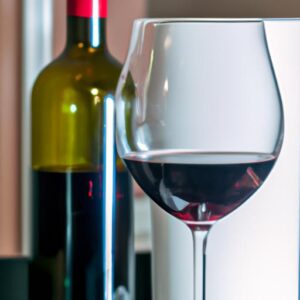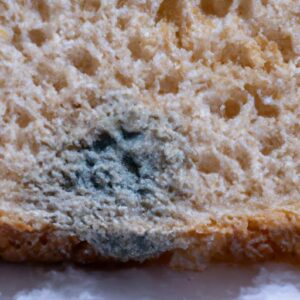Salmonella, a notorious bacteria that can cause severe illness, has become a growing concern in our modern society. With its ability to contaminate various food sources, it’s crucial to understand the effects of cooking on salmonella. In this article, we’ll explore the importance of cooking in preventing salmonella infections, shedding light on how this simple act in our kitchens can protect us from potential harm.
First and foremost, let’s grasp the nature of salmonella and the health risks it poses. Salmonella is a type of bacteria commonly found in raw or undercooked eggs, poultry, meat, and seafood. Its consumption can lead to gastrointestinal distress, including symptoms like diarrhea, vomiting, and abdominal pain. In severe cases, it can even result in hospitalization or, in rare instances, prove fatal.
Here’s where cooking comes into play as a powerful defense mechanism against salmonella infections. By subjecting food to high temperatures, we can effectively eliminate or reduce the number of salmonella bacteria present. Cooking disrupts the structure of these harmful microorganisms, rendering them unable to cause harm to our bodies. However, it’s important to note that not all cooking methods are equally effective in killing salmonella.
Now that we understand the significance of cooking in preventing salmonella infections, let’s delve deeper into the factors that influence its effectiveness. Different types of food require specific cooking requirements, and the method employed plays a vital role in salmonella elimination. For instance, thoroughly cooking poultry and eggs is crucial, as they are common carriers of salmonella. Additionally, using food thermometers to ensure food reaches the recommended internal temperature is essential for killing the bacteria effectively.
In conclusion, cooking is a powerful weapon against salmonella infections. By understanding the effects of cooking on salmonella, we can protect ourselves and our loved ones from potential harm. In the following sections, we will explore the temperature thresholds for killing salmonella, guidelines for safely cooking various food items, and more. So let’s continue our culinary journey and discover how we can keep salmonella at bay through the power of cooking.
Stay tuned for Section II where we will delve deeper into the understanding of salmonella, its sources, and the risks it poses to our health.
What is Salmonella?
Salmonella, a group of bacteria belonging to the Enterobacteriaceae family, is a significant cause of foodborne illnesses worldwide. Let’s explore the defining characteristics of salmonella, its common sources of contamination, and the symptoms and health risks associated with salmonella infections.
Definition and Characteristics of Salmonella Bacteria
Salmonella bacteria are rod-shaped, gram-negative organisms that can survive in various environments, including water, soil, and the intestines of animals and humans. There are two main species of salmonella: Salmonella enterica and Salmonella bongorWithin these species, there are over 2,500 serotypes, or strains, of salmonella, each with its own unique genetic makeup.
Common Sources of Salmonella Contamination
Salmonella can contaminate a wide range of food items, primarily those of animal origin. Poultry, eggs, raw or undercooked meat, unpasteurized milk and dairy products, and seafood are common sources of salmonella contamination. Fruits and vegetables can also be contaminated if they come into contact with contaminated soil, water, or animal feces during cultivation.
Symptoms and Health Risks Associated with Salmonella Infections
When someone ingests food or water contaminated with salmonella, they may experience symptoms such as diarrhea, abdominal cramps, nausea, vomiting, and fever. These symptoms usually manifest within 6 to 72 hours after exposure and can last for several days. In some cases, severe dehydration and hospitalization may be necessary, especially for vulnerable populations such as young children, older adults, and individuals with weakened immune systems.
Moreover, salmonella infections can have long-term health consequences. Some individuals may develop a condition called reactive arthritis, which causes joint pain, swelling, and inflammation after a salmonella infection. Additionally, chronic complications like irritable bowel syndrome (IBS) have been linked to previous salmonella infections.
Understanding the nature of salmonella is crucial to prevent its spread and protect our health. In the following sections, we will explore the role of cooking in eliminating salmonella, the factors that affect its eradication, and the guidelines for safe cooking practices. So let’s continue our journey and uncover the secrets to keeping salmonella at bay!
Stay tuned for Section III where we will dive into the role of cooking in preventing salmonella infections.
Understanding the Role of Cooking in Salmonella Prevention
How Cooking Affects Salmonella Bacteria
Cooking plays a crucial role in eliminating salmonella bacteria from our food. When exposed to heat, the structure and integrity of salmonella are compromised, rendering them unable to cause harm. By subjecting food to high temperatures, we effectively break down the cellular components of salmonella, preventing its survival and replication.
Temperature Thresholds for Killing Salmonella
To ensure the complete eradication of salmonella, it’s important to understand the temperature thresholds required for killing the bacteria. The United States Department of Agriculture (USDA) recommends specific internal temperatures for different food items. For instance, poultry should be cooked to an internal temperature of 165°F (74°C), while ground meats should reach an internal temperature of 160°F (71°C). This ensures that any potential salmonella bacteria present in these foods are destroyed, minimizing the risk of infection.
Importance of Proper Cooking Techniques and Times
Proper cooking techniques and times are equally vital in the battle against salmonella. It’s important to follow recommended cooking times to ensure that food is cooked thoroughly. Inadequate cooking times can leave behind pockets of raw or undercooked food, providing a breeding ground for salmonella bacteria.
Additionally, employing proper cooking techniques helps distribute heat evenly, ensuring that all parts of the food reach the necessary temperature for salmonella elimination. Techniques such as flipping, stirring, and rotating food during cooking can aid in achieving uniform heat distribution, reducing the risk of undercooked areas where bacteria can survive.
Significance of Using Food Thermometers
Using a food thermometer is an indispensable tool in guaranteeing that food reaches the appropriate internal temperature for salmonella elimination. Visual cues alone, such as color or texture, are not reliable indicators of whether food is fully cooked. A food thermometer provides accurate readings, giving you the confidence that your food has reached the necessary temperature to kill any potential salmonella bacteria.
By understanding how cooking affects salmonella, following temperature guidelines, employing proper techniques, and using food thermometers, we can ensure that our food is cooked safely and free from harmful bacteria.
Stay tuned for Section IV where we will explore the factors that can impact the effectiveness of cooking in killing salmonella.
Factors Affecting Salmonella Elimination through Cooking
When it comes to eliminating salmonella through cooking, several factors come into play. Understanding these factors is essential to ensure that we are effectively eliminating the bacteria and minimizing the risks associated with salmonella infections. Let’s explore some key considerations:
Different types of food and their cooking requirements
Not all foods require the same cooking methods or temperatures to eliminate salmonella. Poultry, eggs, meat, and seafood, for example, have different optimal cooking requirements. Poultry and eggs, in particular, should always be cooked thoroughly to kill any potential salmonella bacteria. It is crucial to follow specific guidelines and recommended cooking times for each type of food to ensure the complete elimination of salmonella.
Influence of cooking methods on salmonella elimination
The cooking method used can significantly impact the effectiveness of salmonella elimination. High heat methods, such as grilling, baking, or frying, can be particularly effective in killing salmonella. These methods expose the food to intense heat, which helps destroy the bacteria. However, methods like poaching or steaming may not reach the necessary temperatures to eliminate salmonella completely. It is important to choose the appropriate cooking method based on the food being prepared to ensure proper salmonella eradication.
Variables that may impact the effectiveness of cooking in killing salmonella
Several variables can affect the effectiveness of cooking in killing salmonella. One crucial factor is the accuracy of cooking temperatures. Inadequate cooking temperatures may not reach the threshold required to destroy the bacteria. Additionally, the size and thickness of the food being cooked can impact cooking times and the ability to eliminate salmonella effectively. It is important to ensure that food is cooked uniformly and reaches the recommended internal temperature throughout.
Potential risks of undercooking or improper cooking practices
Undercooking or improper cooking practices pose significant risks when it comes to salmonella elimination. Consuming undercooked or raw foods, especially those known to carry salmonella, increases the chances of infection. It is important to be mindful of proper cooking times, temperatures, and techniques to minimize these risks. Following recommended guidelines and using food thermometers can help ensure that food is cooked thoroughly and salmonella is effectively eliminated.
By considering these factors and adhering to proper cooking practices, we can significantly reduce the risk of salmonella infections. In the next section, we will provide guidelines for safely cooking various food items and discuss the recommended internal temperatures for each.
Conclusion
In conclusion, understanding the effects of cooking on salmonella is paramount for ensuring food safety and preventing infections. Cooking plays a crucial role in eliminating or reducing the presence of salmonella bacteria in our food, protecting us from potential health risks.
Throughout this article, we have explored the importance of cooking in preventing salmonella infections. We have learned how cooking disrupts the structure of salmonella bacteria, rendering them harmless. However, it is important to note that not all cooking methods are equally effective in killing salmonella. Different types of food require specific cooking requirements and methods to ensure proper elimination of the bacteria.
To safely cook and eliminate salmonella, it is essential to follow specific guidelines. Recommendations for cooking various food items, such as poultry, eggs, meat, and seafood, should be followed diligently. Each food item has its own safe minimum internal temperature that needs to be reached to kill salmonella effectively.
Moreover, precautions should be taken to prevent cross-contamination during cooking. This means avoiding the use of the same utensils, cutting boards, or surfaces for raw and cooked foods. Practicing good food hygiene and sanitation is crucial in reducing the risk of salmonella contamination.
By adhering to these guidelines and taking necessary precautions, we can reduce the chances of salmonella infections and ensure the safety of our meals. So remember, when it comes to cooking and salmonella, knowledge and proper practices are key.
Thank you for joining me on this culinary journey to understand the effects of cooking on salmonella. Stay informed, stay safe, and enjoy your delicious, salmonella-free meals!
Stay tuned for more informative articles on food safety and health.


